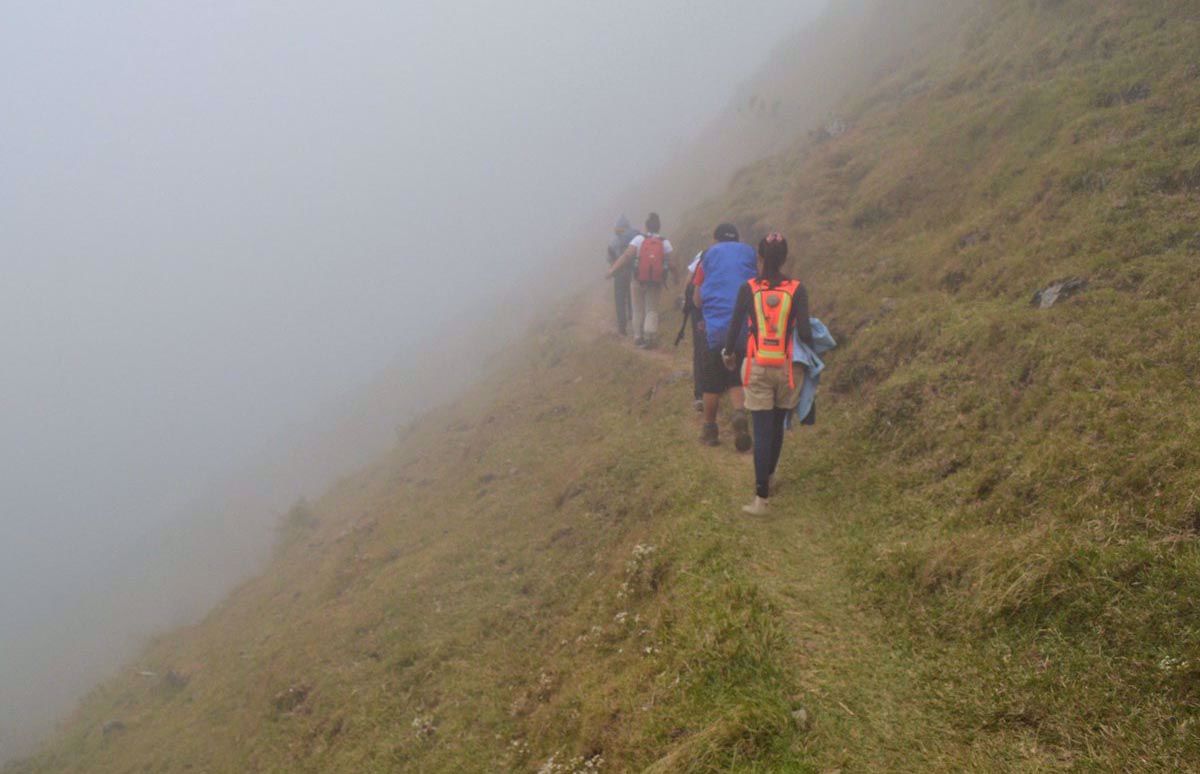When it comes to adventure travel, there is no bad weather; there is only inadequate gear. It's one of my favorite sayings and I thought about it a lot on my recent trip to Switzerland. Especially as we hiked over a high pass in rain that turned to sleet, briefly to snow, and then back to rain as we descended to the valley below. At the end of the day, we were all damp and some of us were a bit chilled. But we had adequate gear and many of us thought the day had been rather magic with the shifting clouds.
So what is "adequate gear"? To some extent it depends on where you are. In the mountains, where weather is always changeable and a warm hut can be hours away, you definitely have to be better prepared than you do for a walk in your local park. But if you have the gear and know how to be prepared in the worst situations, then you will always be ready. Here are the critical elements.
- Rain gear There is no such thing as perfectly breathable and completely waterproof rain gear - it is always a tradeoff. If it is totally waterproof (e.g. rubberized vinyl), it will not be breathable. Rubberized vinyl works great when the activity is not highly aerobic, i.e. paddling in the Boundary Waters Canoe Area. But if you're hiking, then it needs to be breathable or you will drown in sweat. However, if it is too breathable, it won't be waterproof.
The bottom line is that you will always get damp when you're active and it rains for any length of time - either from the rain seeping in or from your sweat pouring out. But without rain gear, you will get drenched. If you are in the mountains, rain pants are essential to keep from getting soaked.
Since rain gear will not keep you completely dry, to stay warm you have to depend on- - Synthetic or wool clothing I can't stress how important the "no cotton" rule is in the mountains or any cool environment. Once cotton gets wet, which it does quickly, it not only doesn't keep you warm, it actively robs you of warmth. The layer(s) between your rain jacket and your skin have to be a synthetic material or one of the new wool products. Even if the only cotton you're wearing is a bra, it can be a chilling experience (if you like going bra-less, this would be an excellent time).
- Gloves Despite the virtues of synthetics, they are useless in cold and rainy weather as your only defense. Either you need a waterproof shell over them or you need wool. My go-to gloves are an old pair of light ragg wool fingerless gloves. If it is really cold, I switch to wool mittens.
A good backup is to wear a pair of warm socks over your hands. I usually keep a pair in my daypack in case my socks need a change or I need additional hand covering. Cold hands are not only miserable, they are unsafe: cold hands become so stiff that you can't hold your trekking poles. Or undo your pants for that matter, and you know where that can lead. - Hat A wool or synthetic hat is good. I prefer something with a brim to keep rain out of my eyes but beanies can be adequate too. Keeping your head warm will definitely keep you feeling warmer.
- Boots The important thing to remember about boots, whether they are all leather or a mix of leather and cloth, is that they periodically need to be cleaned and re-waterproofed. There are cleaning products specific for both. You can read how to do it in this Backpacker Magazine article.
Having wet boots isn't the worst thing but putting on wet boots is very unpleasant. Remember never to dry your boots by exposing them to direct heat- it dries out the glues that keep your boots together. The best way is to remove the insoles and stick lots of wadded-up newspaper into them. It works amazingly well!! - Food Food is really critical because you will be burning more calories, but a sit down lunch is unlikely. So you want to have food that you can snack on throughout the day. That way when you arrive at the shed you remembered but the protection of the overhang has been claimed by the local goats, you can still get adequate fuel.
- A small thermos I know this isn't essential. But I bought a small flask (thermos) when I was in Scotland. Drinking hot sweet tea (no, no whiskey) is such a treat when you're damp and cold.
- Attitude Really, this is the most important tool you have. You can't control the weather but you can control your attitude. The outdoors is no less beautiful in the rain, it's just different.
Those are my top 8. Please share your thoughts and additions. Don't let a little wet weather keep you indoors!



